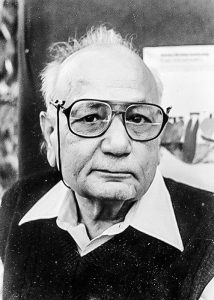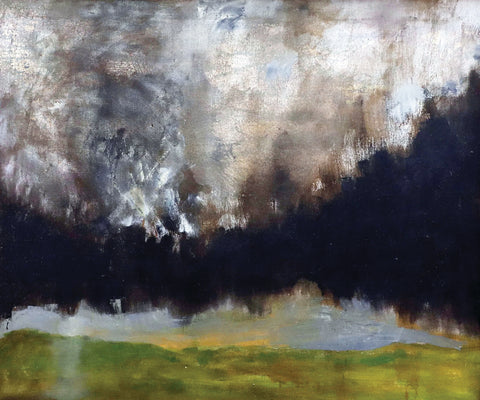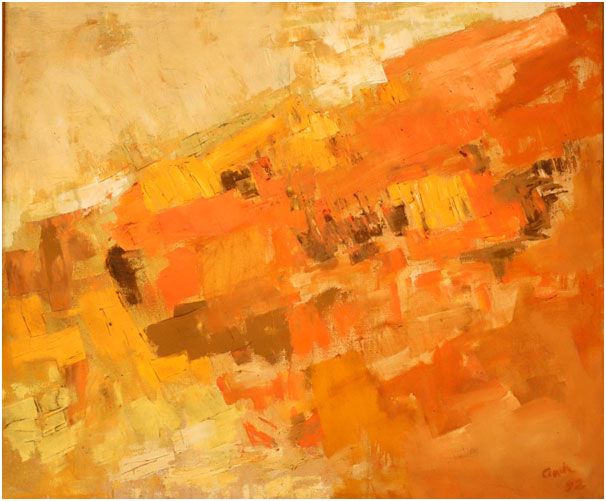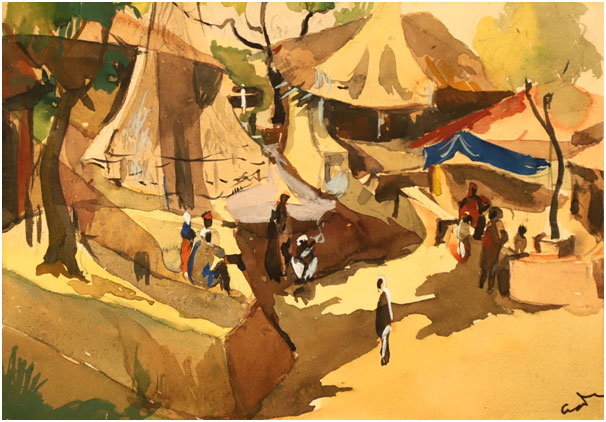Abhishek Dixit
Hari Ambadas Gade was born in the Amravati district of Maharashtra and graduated in Science from the University of Nagpur in 1938. In the same year, his interest in art grew, and he enrolled himself at the Nagpur School of Art. He completed his Diploma in art in 1949 and his Master’s in art a year later, which began his artistic journey. H. A Gade was one of the six members of the Progressive Artist’s Group and remained a member until 1956 when the group was dissolved. His unique dynamic artistic style and use of colors gave him the credit of being one of the most significant abstractionists of the post-independence era. His revolt against the traditional academic style of art gave him the liberty to explore his dimensions and meticulous skills to follow abstraction.

Gade’s journey started with the exploration of watercolors, and later he turned to oils on canvas, which became his remarkable signature. Because of his deeper and psychological understanding of colors, he became an auteur in using colors brilliantly on the canvas, for which he sometimes used knives as well. His passion and significant use of color gained him achievements and fame, therefore, he got the opportunity to have exhibitions in Mumbai, Baroda, Ahmedabad, and Calcutta. He also participated in the Stanford University exhibition in 1949, the Venice Biennale in 1954, and the Indian Art Exhibition which toured East Europe in 1955-56. He won a gold medal at the annual exhibition of the Bombay Art Society in 1956. He also exhibited in Basle in 1951 and 1956 and in Venice in 1957. The contribution of Gade can not be negligible as including all the members of the Progressive artist’s group, he dives into the dimensions of colors as deeply that it makes him the most recognizable artist of that era. His work was highly appreciated by the critics and the blunt articulation conveyed by his work earned him a dominant position within the group. However, he remained a shadow figure, a bit far from recognition.
He could be understood as a classic modernist because of his style of painting landscapes as his genre studies. Though he had to struggle in the beginning like the other artists, he managed to find his style. One of his defining characteristics was the presence of a fundamental element in his ‘Plein air’ compositions. It distinguishes his work from others and lends it a detached significance because he came to it from a scientific perspective, which was his calling. Gade was a mathematician and a scientist before he actually started painting. He was fond of sketching and used to sketch in his free time; it eventually led him to join the art school where he learned the techniques and was to make his acquaintance with Raza and the two were to become lifelong friends. As a result, Gade chose to depict houses based on the locality. By dividing them into rectangles, he could portray the surface. To express his painterly constructions, Gade chose small towns like Udaipur, Nasik, and Omkareshwar.

Even though he claimed formalism in his early years, these brick-layered houses with shuttered windows and sleepy facades seemed to be infused with their inhabitants’ frustrations. To create tonal variations, the houses started deviating from the planar surface and became cubes of color wedged onto them by the late 1950s. Instead of reflecting small-town life, they appeared like polished gems that belonged in a museum. With sheer color modulation, Gade’s stillness evoked the same turbulence as his painting against the violence that had disrupted the peace. Color, in his view, was of the utmost importance, and he experimented with its infinite possibilities, influenced by an article in a research journal describing its emotive quality. Due to his knowledge of the chemistry of color, he was able to determine its subtle nuances as a student of biochemistry. A comparison can be made between Gade’s work and Ram Kumar, whose painting of houses dominated his middle period. Several of his paintings feature rectangular blocks of white, grey, blue, brown, and black as he dissolves the shapes of houses into abstract shapes. A densely textured blue surface is embedded with these strings across the canvas. Gade kept himself away from emotions while painting; he believed that emotions must arise from the painting, they are within it, born out of it. With the materials that Gade employs to virtually recreate forms and emotions on the canvas, he gives his paintings a lifeline that is not void of feeling or passion, but rather one that emphasizes composition.

A series of cubes of color wedged onto the flat surface of the houses started becoming abstract by the late 1950s. Now, they resembled precious gems that have been polished to perfection, not the small-town life they once represented. Through sheer color modulation, Gade’s stillness expressed the same turbulence as his painting, which challenged the violence that had disrupted the peace. Gade always placed a secondary value on figurative work that entails an emotional investment. Color plays a central role in Gade’s paintings, which he assigns a great deal of importance. As he states, “I receive my pictorial experience through the juxtaposition of color, with all its functional and spatial attributes”. The fact that Gade was rooted in his environment, like Husain, must be remembered. Being conservative by temperament, he conserved rather than extended, and as a result, he had limited success. He would have acquired undeniable greatness if he had striven to go beyond his own goals. Although he adapted his landscapes to a new vocabulary, he is considered one of India’s first abstract artists.






